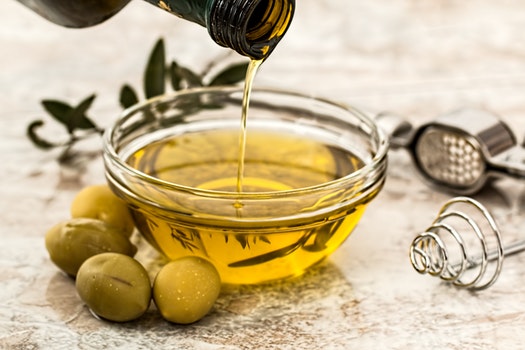
Olive Oil or Coconut Oil?

Cooking oils are seemingly simple and rarely, if ever, talked about at dinner parties or in any social circle. They are probably only thought about when being used or thrown out. When it’s time to replenish, you reach for the first “organic” or “extra-virgin” bottle that you see on the shelf and may even lean towards a particular brand merely because it is more economically pleasing. If you can relate to any of the above, it’s time to gain some insight into the world of olive and coconut oils. How they are made, which one is healthier, and what to look for when making your next purchase of these healthy, tasty products.
How Olive Oil Is Made
Purchasing olive oil can almost be compared to finding a perfect wine. The overall process of making olive oil is complex and has been fine tuned over thousands of years. Its origin in the Mediterranean region is still flourishing today with a variety of commercially producing olive trees. Although only a few olive varieties meet the criteria for producing olive oil there are hundreds of varieties that exist. Even the select few that eventually make it into liquid form and into your pantry also contain varying amounts of a health-promoting compound called polyphenols [4]. Maximizing flavor and the polyphenol content depends largely on the harvesting period and oil condition. There are short windows of peak times when the olives should be harvested and any bruising during the collection process can quickly diminish the nutrients within the olives. Once picked, transported, and cleaned the cold pressing process begins. Steel rollers turn the whole olives into a paste. Water is then slowly mixed in with the paste and then may be heated to a temperature of 82 F, low enough to still be labeled as “cold pressed.” The reformed paste is then pressed or spun in a centrifugal chamber to separate the liquids and solids (pomace). Finally, the water and oil will be separated and then the oil will undergo final steps of processing. It is then carefully stored and bottled to minimize any breakdown, keeping the quality intact.
“Oils made from ripe olives tend to be a golden- or light-yellow color. The color of olive oil is not an indicator of quality in relationship to culinary uses; however, if you’re looking to get the most polyphenols from your olive oil, choose one with golden or yellow tints because they come from ripe olives and may contain more healing compounds.”[4]
The difference between extra-virgin and virgin olive oil depends on how the oil was processed and it affects the quality and taste. “Extra virgin olive oil has a maximum acidity of 0.8% and can have no defects. Virgin olive oil can have acidity up to 2.0% and a median of defects between zero and 2.5 in a tasting by a trained panel.” [7]. Extra-virgin olive will cost a little more, but it will taste better and be healthier for you.
How Coconut Oil Is Made

Coconut oil is not as regulated as olive oil. Therefore, the terms “virgin” and “extra-virgin” coconut oils are used interchangeably. Other finishing processes include “refined” and “partially hydrogenated.” Once the meat is harvested from the coconut, it is either used fresh or it is dried. Dried coconut meat is known is copra. Harvard.edu School of Public Health sums up the various refining processes well [2]:
- Virgin or Extra Virgin: If using a “dry” method, the fresh coconut meat of mature coconuts is dried quickly with a small amount of heat, and then pressed with a machine to remove the oil. If using a “wet” method, a machine presses fresh coconut meat to yield milk and oil. The milk is separated from the oil by fermentation, enzymes, or centrifuge machines. The resulting oil has a smoke point of about 350 degrees Fahrenheit (F), which can be used for quick sautéing or baking but is not appropriate for very high heat such as deep-frying. You may also see the following terms on labels of coconut oil:
- Expeller-pressed—A machine presses the oil from coconut flesh, often with the use of steam or heat.
- Cold-pressed—The oil is pressed without use of heat. The temperature remains below 120 degrees F; this is believed to help retain more nutrients.
- Refined: The copra is machine-pressed to release the oil. The oil is then steamed or heated to deodorize the oil and “bleached” by filtering through clays to remove impurities and any remaining bacteria. Sometimes chemical solvents such as hexane may be used to extract oil from the copra. The resulting oil has a higher smoke point at about 400-450 degrees F, and is flavorless and odorless.
- Partially Hydrogenated: The small amount of unsaturated fats in coconut oil is hydrogenated or partially hydrogenated to extend shelf life and help maintain its solid texture in warm temperatures. This process creates trans fats, which should be avoided.
Benefits and Downsides
In terms of cooking, olive oil is the better choice. According the The New York Times, “Compared to a tablespoon of olive oil, a tablespoon of coconut oil contains about six times the amount of saturated fat, nearly meeting the daily limit of about 13 grams that the American Heart Association recommends. High saturated fat intake has been tied to increased levels of LDL, or “bad,” cholesterol, which raises the risk of heart disease.” Olive oil on the other hand, is rich in antioxidants, contains omega-3s and omega-6s, but mostly comprised of monounsaturated fats that are “linked to decreased risk of high blood pressure and a decrease in LDL (AKA bad) cholesterol, both of which are associated with heart disease. In fact, research shows olive oil benefits heart health in multiple ways and the evidence that it reduces heart disease and stroke risk is pretty robust.”[5]
It is true that both oils contain healthy antioxidants. However, most coconut oils on the market are stripped of these nutrients during the refining process. Harvard.edu further explains that, “Many of the health claims for coconut oil refer to research that used a special formulation of coconut oil made of 100% medium-chain triglycerides (MCTs), not the commercial coconut oil most available on supermarket shelves.”
Look Out For Fraudulent Products
Many headlines have reported scams and fraud in the olive oil business. It is important that you choose a trusted and quality product to ensure you maximize your health benefits. Two reasons that may affect the quality are tampering or improper storage. Unfortunately, fraud is widespread in the industry and has been for decades. The most common method is blending ‘extra-virgin’ oil with a lower quality oil. CBSnews.com reports a few ways that you can combat fraud. “Look closely at the label. It may have a pretty Italian landscape, but was the oil actually produced in Italy?…[a city in Sicily or Puglia is known for producing olive oil.” [1]
“American shoppers can also buy online directly from Italian producers like Lucia Iannotta, who runs Iannotta Oil or Nicolo Clemenza, who is organizing his fellow farmers to cut out the Mafia middle men. If you’re paying seven bucks or eight bucks for a bottle of Italian extra virgin olive oil…it’s probably not Italian extra-virgin.”[1]
To Sum It Up
The healthier choice is a good quality extra-virgin olive oil product. It contains antioxidants along with lower amounts of saturated fats. Coconut oil can lose a high amount of antioxidants during the refining process. However, coconut oil is a better alternative to other sources of saturated fat such as butter. Lastly, when you are ready to buy your next bottle of extra-virgin olive oil, be sure to do your due diligence to find the source of the product to ensure you are buying a tamper-free oil.
Written by Robert Connolly
Sources:
- CBSnews.com | Spotting fake olive oil
- Harvard.edu | Coconut Oil
- Heathline.com | Olive oil
- HowStuffWorks.com | How olive oil is made
- Nutritiouslife.com | Coconut or olive oil healthier?
- NYTimes.com | Coconut Oil or Olive Oil?
- Olive Oil Times
- Snopes.com | Fake olive oil
- Washingtonpost.com | Olive oil options

How do you choose a protein powder?

Exercise...A way of life
You May Also Like

Signs That Your Liver Needs A Detox
June 4, 2020
Setting Healthy Goals While Grieving
February 26, 2022